What fertilizers should be applied in the fall and how to do it correctly?
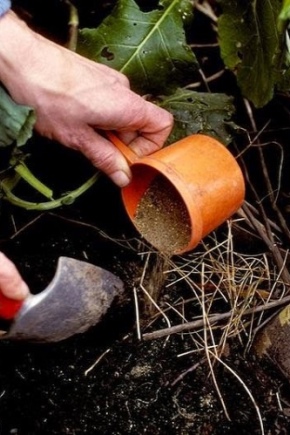
You do not need to be a professional farmer to grow a good crop on the site. But even without basic knowledge of agricultural technology, leaving will not work. Beginners in gardening and gardening often make a typical mistake: they do not follow the feeding regime or simply choose the wrong fertilizers. Let's figure out what fertilizers to apply in the fall and how to do it correctly.
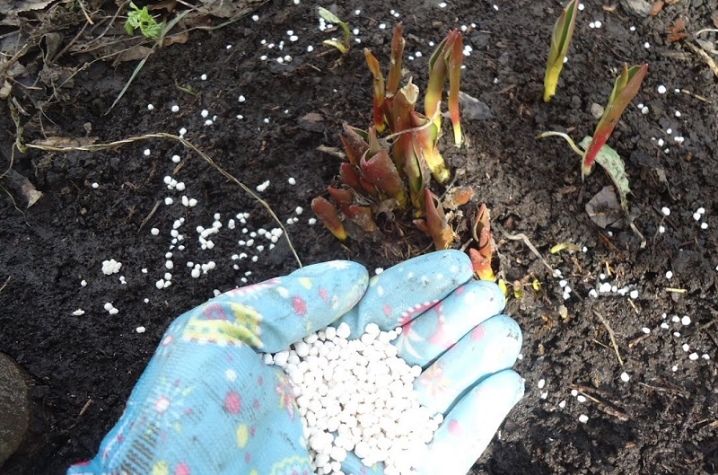
What are they needed for?
Not only spring and summer are hot times for gardeners. You have to take care of the harvest throughout the year, and fall is the season when you need to take strategic steps. That is, fertilization. They will help enrich the soil, create a supply of nutrients. Why is top dressing applied in the fall?
- Plants that remain for the winter receive the necessary energy supply. This will increase their resistance to frost. Bushes and trees on the site should be fed all year round. If the winter is snowless, but still frosty, autumn dressings are irreplaceable.
- If you fertilize the soil in the fall, in the spring the nutrients will get not only to those plants that have just “woken up” after hibernation, but also to fresh seedlings and seeds.
- Fertilizers applied in autumn promote protein-carbohydrate plant synthesis. And it stimulates other important growth processes.
What kind of fertilizer to take will depend on the composition of the soil and its type. But the plantings usually lack phosphorus and potassium. If the soil is sandy or sandy loam on the territory of the site, more fertilizers will be required. But heavy clay soils are economical in this sense, fertilizers are not washed out of them so quickly.
Specifically about fruit trees and shrubs, in the fall, the second period of their development begins. There is no more aerial growth of shoots, but the growth of the root system is relevant precisely in the fall. At this time, fruit buds are laid, in the roots there is an active accumulation of nutrients.
That is why, after the equator of autumn, it is necessary to apply phosphorus-potassium fertilizers and, of course, organic matter.
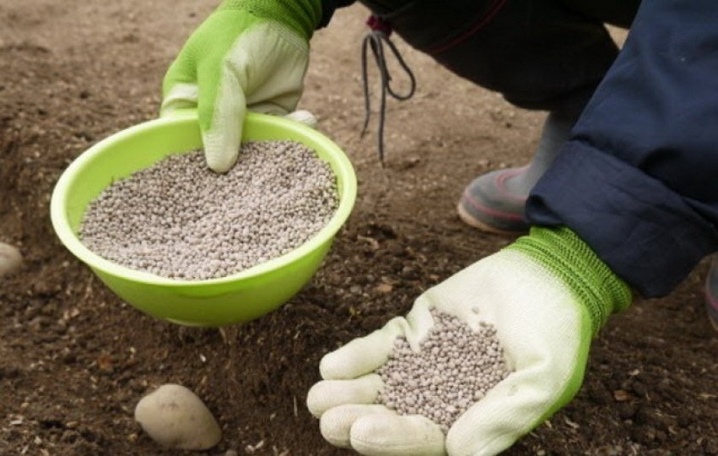
Views
There are several large groups of fertilizers that are applied in the fall. The most popular are organic.
Organic
The main property of organic matter is to restore the amount of humus and improve the biochemical composition of the soil. Organic matter is considered an environmentally friendly product, and this is especially important for the garden and vegetable garden. In organics there is practically everything to restore the composition of the earth and stimulate the development of the plant. Organic is a "cocktail" assembled by nature, in which everything is harmonious.Therefore, autumn dressing with such compositions makes it possible for plants to receive nutrition in a metered dose, at the optimal moment of development.
What kind of organic feeding can be?
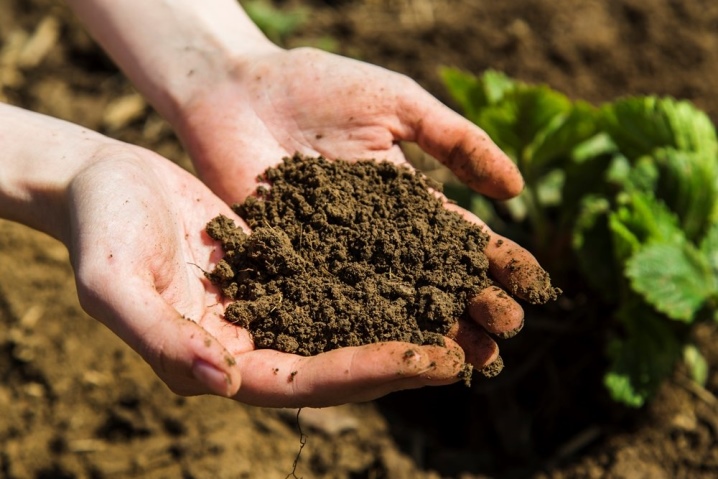
Manure
The most demanded type of organic matter. But there are enough restrictions regarding it.... For example, fresh manure is not cultivated under trees and bushes, because it is dangerous to burn the root system. The ideal combination would be manure and ash, but fertilizer can only be used in the form of humus or compost. It is not necessary to fertilize the autumn garden with manure annually, once for 2-3 years is enough.
In the fall, mullein and bird droppings are preferred. Manure is considered a nitrogen-containing fertilizer, it is suitable for digging.
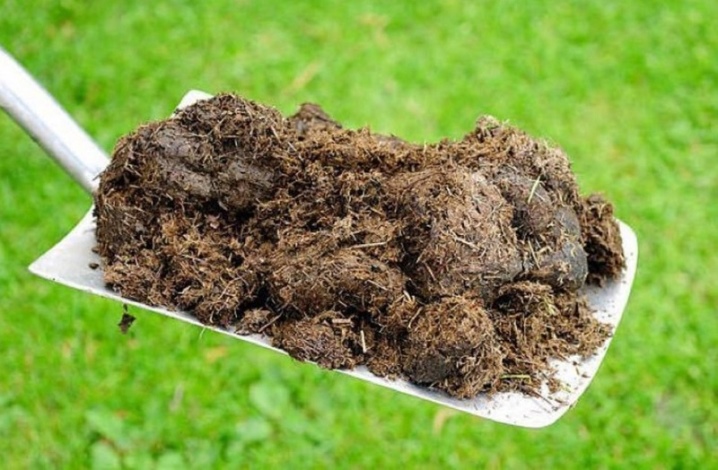
Wood ash
Almost universal composition. Ash promotes plant growth, protects it from pest attacks, and also catalyzes the action of other nutrients.
Ash is used as a self-sufficient top dressing, or other fertilizers can be supplemented with it (as in the example with manure).
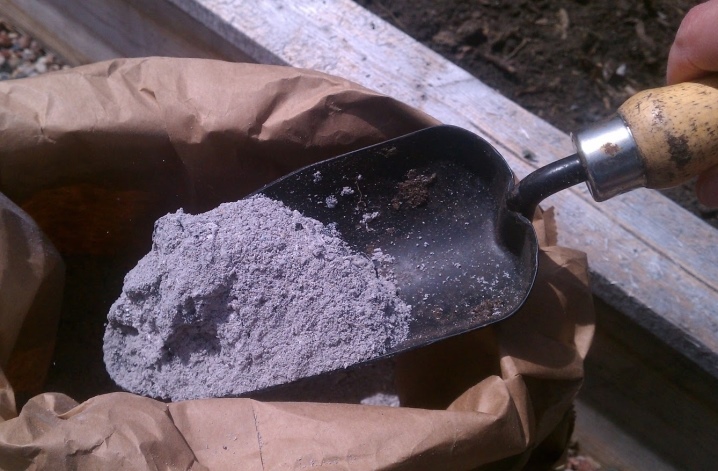
Bone flour
It is considered a long-playing organics. Animal residues contain a lot of phosphorus, potassium, calcium, and the most important trace elements.
But you should not frequent it with such fertilizer, only once in 3 years you can arrange autumn feeding with bone meal.
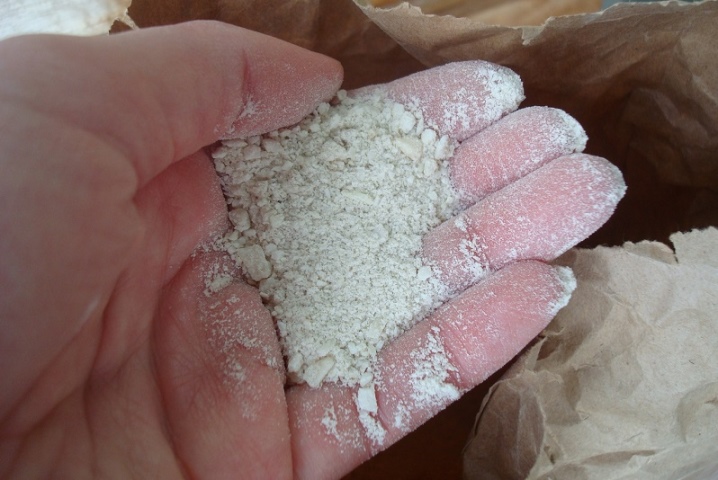
Sawdust
Wood debris is not only useful as a fertilizer. In addition, they also loosen the soil and help retain moisture.
In this case, after a while, the sawdust rotted, and humus additionally feeds the soil.
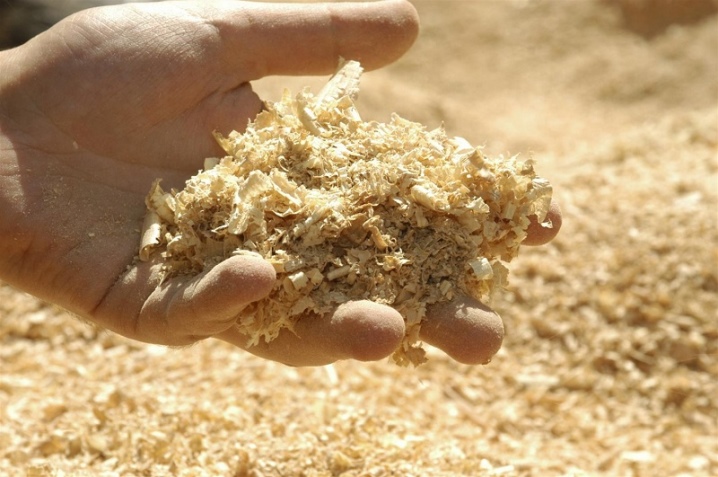
Compost
This is a suitable top dressing for depleted types of soil. It improves soil fertility.
And those substances that were introduced before, increase their benefits.
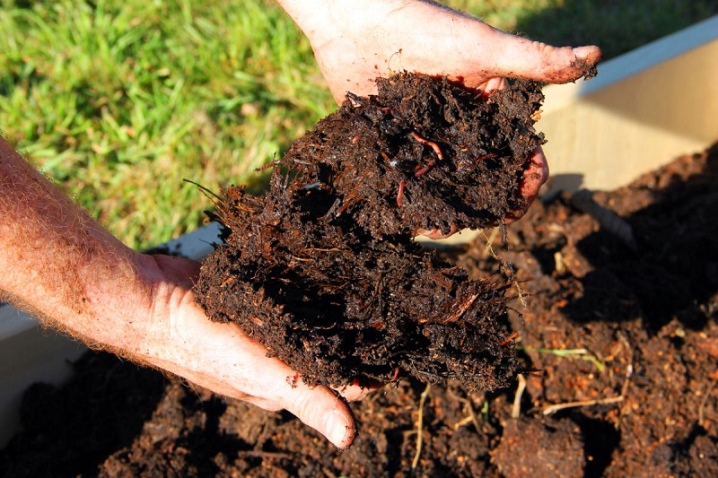
Peat
It is used on all types of soil, it is often fed to seedlings. Peat contains practically everything that is needed for the growth, development and strengthening of crops.
This is a long-lasting fertilizer, therefore it is perfect for autumn dressings.
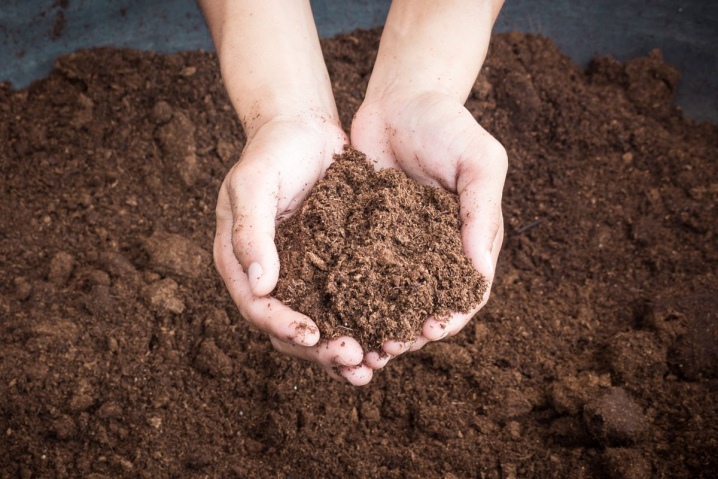
Mineral
It is undesirable to use only mineral fertilizing, because the amount of humus will decrease with each subsequent season. The soil will lose its important looseness and begin to crack. And this will affect the taste of the crop. If vegetables are grown purely on mineral mixtures, they will noticeably taste different from organic products. Mineral fertilizers can be instant and long-lasting. Here are the most popular compositions.
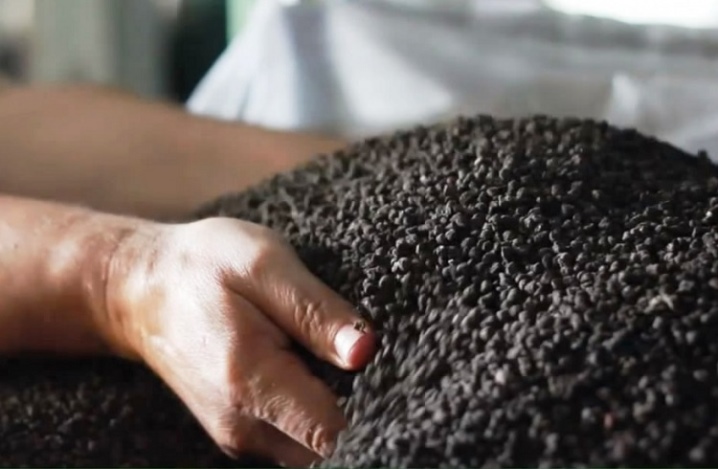
Phosphoric
Phosphorite flour, for example, is as close as possible to natural fertilizers, therefore it is considered a godsend for gardeners. Such flour is obtained by fine grinding of phosphorites (these are sedimentary rocks, therefore, the product is considered a natural product). On acidic soils, this fertilizer is optimal, because it alkalizes the soil, brings it closer to a neutral reaction. But the most popular phosphate fertilizer is double superphosphate.
It is optimal to introduce it together with organic matter, humus.
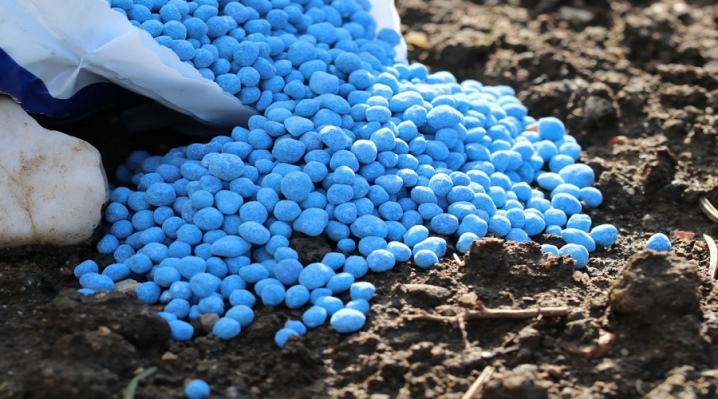
Potash
They could be applied in the spring, if not for the chlorine in their composition. With autumn feeding, chlorine evaporates, therefore, feeding becomes completely safe by the spring. Agronomists recommend using potassium sulfate. Its main value is that it prevents nitrates from accumulating in fruits.... But at the same time, potassium sulfate acidifies the soil, therefore it is recommended to use it strictly in alkaline and neutral areas. Another potash fertilizer is potassium magnesium. It contains less potassium, but there is also magnesium. On sandy soils, this is an extremely important top dressing. Well, the most potassium-rich fertilizer is potassium chloride, but there is also a lot of chlorine in it.
Therefore, it is brought in only in the fall, more often beets are fed with potassium chloride.
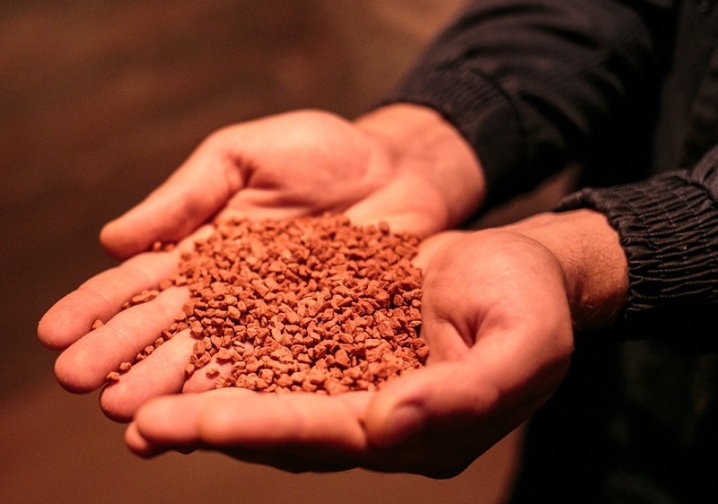
Nitrogen
Basically, nitrogen compounds are introduced only in the spring. But there are also those in this category that are capable of being fixed in the soil for a long time. In autumn, plants need nitrogen, albeit in small doses. Of the popular options - ammonium nitrate, which works well even in frozen soil. But it has a destructive effect on acidic soil.
Less nitrogen in ammonium sulfate, which is used in alkaline areas.
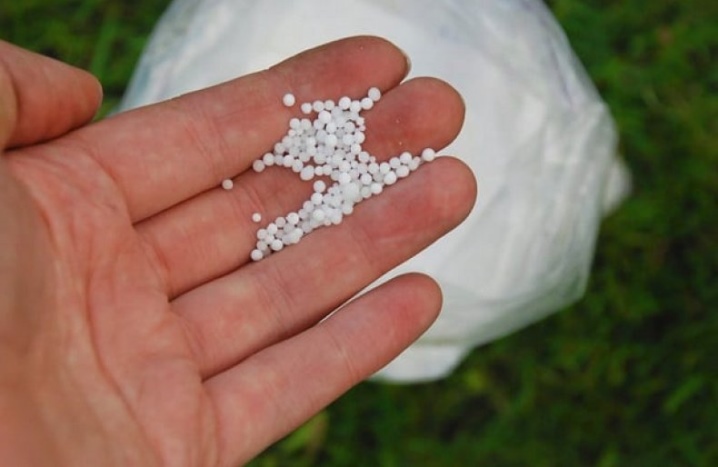
Potatoes and tomatoes love a complex top dressing, in which there is a sufficient amount of nitrogen. But in the mineral form, nitrogen does not linger in the soil for a long time, therefore the best choice would be siderates. But the choice of green manure is not limited to this.
Siderata
Siderata are a very effective organic matter. The farmer can plant these plants between the main crops on the site. But usually the siderates plan to plant after the harvest is harvested.Then, on empty areas, weeds can attack, and in order to prevent this, and at the same time enrich the land, I plant vegetation with a strong root system. In this role, they usually apply:
- legumes are soybeans and peas, as well as clover, lentils, alfalfa, sweet clover, etc .;
- plants of their family Cereals - for example, barley or spring oats, millet, winter rye and wheat;
- phacelia;
- marigold;
- buckwheat;
- sunflower;
- amaranth.
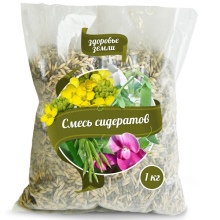
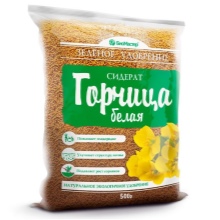
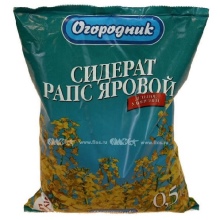
Siderata loosen the soil, enriching it with a useful composition, protect against a large number of pests, do not give a chance for weeds to grow... Mown green manure can become excellent mulch. And if you plant frost-resistant green manures, planted between the beds of the main vegetables, you can reduce the damage from spring frosts. Winter green manures are excellent at retaining snow. For autumn sowing, the following are optimal: mustard and peas, rape and butter radish, nasturtium and calendula, alfalfa. If there is waterlogged soil on the site, experts recommend planting lupine and seradella.
An example of good care: leguminous siderates are planted, they enrich the soil with nitrogen available to the main plants. Subsequently, healthy tomatoes, cabbage, potatoes will grow in this place. If you sow buckwheat, it will reduce the acidity of the soil, enrich it with phosphorus and potassium. It is good to grow all crops in this place, except rhubarb, sorrel, and also spinach. And if you plant cereals as siderates, they will saturate the soil with potassium and nitrogen, increasing its moisture permeability along the way.
Here it will be possible to grow tomatoes and potatoes, zucchini and cucumbers.
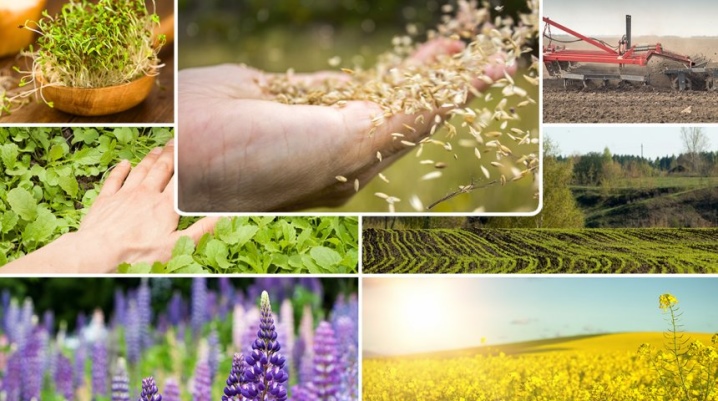
Application rates
They carry out autumn dressing before the cold weather. You need to focus on the approximate dose of fertilization.
Approximate indicators:
- ammonium sulfate - 80-95 g in late autumn for digging;
- simple superphosphate - 40 g for digging for all crops;
- potassium chloride - 10-20 g for the autumn digging of the soil;
- ammonium nitrate - 20-25 g in late summer or warm autumn for cabbage, cucumbers;
- double superphosphate - 10-15 g for digging in the fall;
- potassium sulfate - 30 g in mid-September.
It makes sense to record the fertilizer applied, the date and the amount. This is especially true for novice gardeners who still have to analyze the success of their first steps.

How to properly feed?
Clay and loamy soils are so compacted during the winter that the spring season is often frustrating. Experienced farmers loosen such soils since autumn. How to fertilize the soil correctly?
- Manure. You need to add 3-4 kg of organic matter per 1 square meter. But it is necessary to do it no more than once every 3 years. When all the soil has been dug up, manure should be carefully laid around the plants to a depth of 20 cm, making sure that it does not come into contact with their roots.
- Phosphorus-potassium compounds. On average, 40-60 g of superphosphate and 30 g of potassium salt are applied per 1 square meter of soil.
- Siderata. As soon as these plants have grown to 10 cm, it is time to cut them off and dig them up from the ground.
- Humus under fruit trees can be applied in mid-October... 30 kg of humus is applied under young trees, and 50 kg under those that are already 10 years old or more.
- Ash is extremely useful for berry bushes.... 3-4 kg of ash are added per 1 square meter, but not more often than 1 time in 3 years.
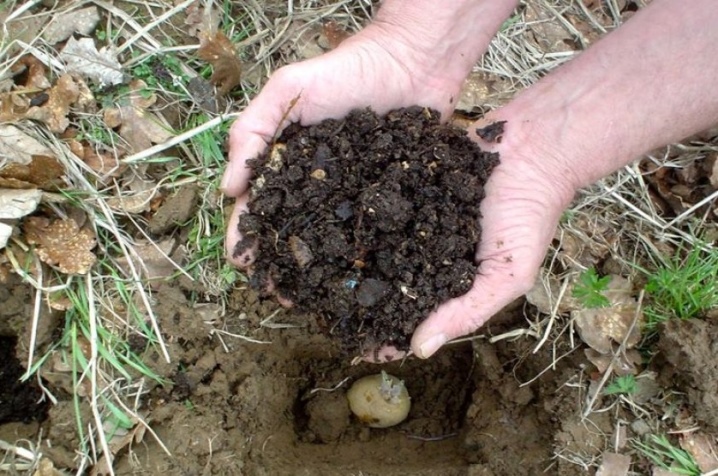
Useful Tips
In such an amount of fertilizers, it is not difficult to get confused. But if you closely follow the information, it turns out that each fertilizer is good for a certain soil, conditions, and the period of the last autumn feeding. Experienced specialists advise you to follow the basic rules for applying autumn fertilizers.
- Plant residues are applied 50 to 50: some of them are burned to obtain ash, and the other half is dug up to return nutrients from the leaves and tops.
- Fallen leaves do not have to be removed - they protect the soil from the cold and will additionally be an excellent top dressing for loosening the soil in spring. But, of course, you will have to remove damaged and infected leaves.
- When feeding trees and shrubs, it makes sense to apply fertilizer in the trunk circle.
- Fertilizers work more efficiently if both dry and liquid form of the compositions are taken at the same time.
Fertilizers need to be applied in doses, it is even better to slightly reduce the recommended amount than to increase the dose. High loads are just as hard on the condition of the soil and the future harvest as their shortage. There are no special difficulties in autumn dressing, this is a logical stage in the end of the garden season. And in order for the soil to endure the winter well, and in the spring to be ready for new plantings, you need to work hard in the fall.
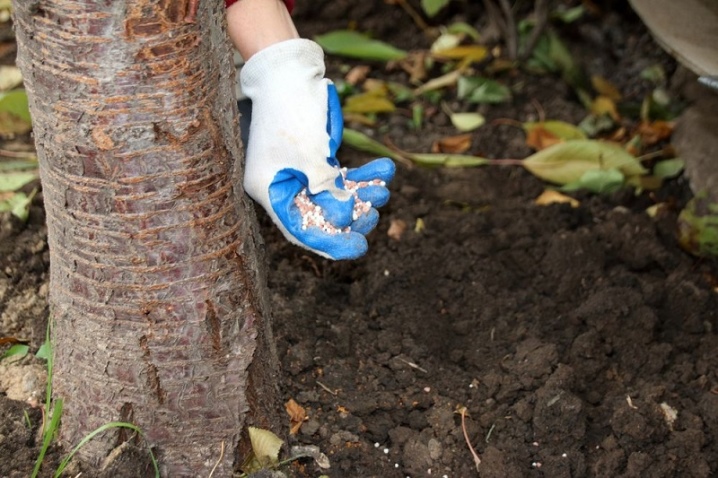
You can find out about what fertilizers to apply in the fall to increase soil fertility in the next video.













The comment was sent successfully.